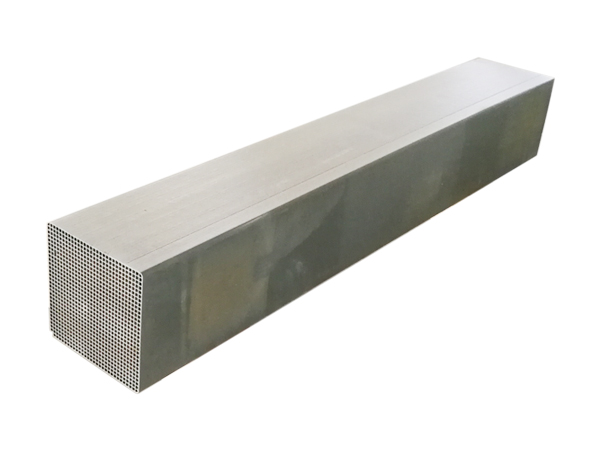The Development of Catalysts in Denitration Reactions
Publishdate:2018-07-16 Views:89
Catalysts are the core part of SCR technology, determining the denitrification efficiency and economy of SCR systems. Their construction cost accounts for more than 20% of the flue gas denitrification project cost, and their operating cost accounts for more than 30%. In recent years, developed countries such as the United States, Japan, and Germany have continuously invested a large amount of manpower, material resources, and funds to research and develop high-efficiency and low-cost flue gas denitrification catalysts. They attach great importance to intellectual property protection in catalyst technology, technology transfer, and production licensing processes.
The initial catalysts were metal catalysts such as Pt Rh and Pt, supported by integral ceramics such as alumina, which had high activity and low reaction temperature. However, their expensive price limited their application in power plants.
Therefore, starting from the late 1960s, three Japanese companies, Hitachi, Mitsubishi, and Takeda Chemical, developed catalysts for TiO2 substrates through continuous research and development, gradually replacing Pt Rh and Pt series catalysts. The components of this type of catalyst are mainly composed of metal oxides such as V2O5 (WO3), Fe2O3, CuO, CrOx, MnOx, MgO, MoO3, NiO, or mixtures with combined effects. Typically, TiO2, Al2O3, ZrO2, SiO2, activated carbon (AC), etc. are used as carriers to undergo reduction reactions with reducing agents such as liquid ammonia or urea in the SCR system. Currently, it has become the mainstream catalyst product for SCR denitrification engineering applications in power plants.

Beijing Fangxin Lihua Technology Co., Ltd. is a technology and environmental protection enterprise dedicated to atmospheric governance. It is a domestic high-tech enterprise with independent intellectual property rights in the research and development, production, sales, and construction of low-temperature SCR denitrification catalysts.
Catalysts are the core part of SCR technology, determining the denitrification efficiency and economy of SCR systems. Their construction cost accounts for more than 20% of the flue gas denitrification project cost, and their operating cost accounts for more than 30%. In recent years, developed countries such as the United States, Japan, and Germany have continuously invested a large amount of manpower, material resources, and funds to research and develop high-efficiency and low-cost flue gas denitrification catalysts. They attach great importance to intellectual property protection in catalyst technology, technology transfer, and production licensing processes.
The initial catalysts were metal catalysts such as Pt Rh and Pt, supported by integral ceramics such as alumina, which had high activity and low reaction temperature. However, their expensive price limited their application in power plants.
Therefore, starting from the late 1960s, three Japanese companies, Hitachi, Mitsubishi, and Takeda Chemical, developed catalysts for TiO2 substrates through continuous research and development, gradually replacing Pt Rh and Pt series catalysts. The components of this type of catalyst are mainly composed of metal oxides such as V2O5 (WO3), Fe2O3, CuO, CrOx, MnOx, MgO, MoO3, NiO, or mixtures with combined effects. Typically, TiO2, Al2O3, ZrO2, SiO2, activated carbon (AC), etc. are used as carriers to undergo reduction reactions with reducing agents such as liquid ammonia or urea in the SCR system. Currently, it has become the mainstream catalyst product for SCR denitrification engineering applications in power plants.

Beijing Fangxin Lihua Technology Co., Ltd. is a technology and environmental protection enterprise dedicated to atmospheric governance. It is a domestic high-tech enterprise with independent intellectual property rights in the research and development, production, sales, and construction of low-temperature SCR denitrification catalysts.




